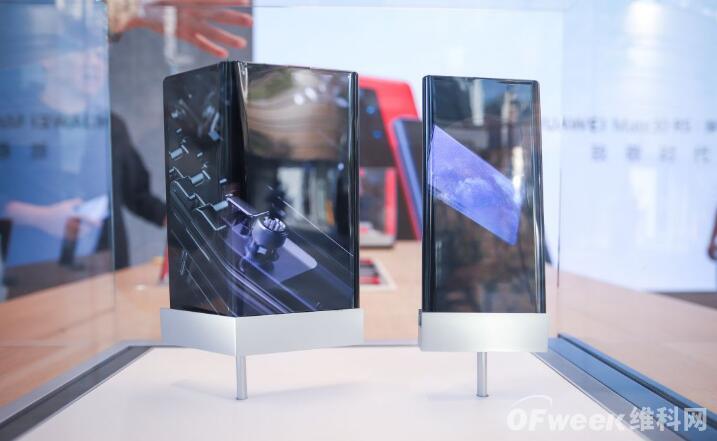Mobile phones are becoming more and more intelligent, and the monitoring of various external environmental factors is becoming more and more accurate, such as distance, light and shade, temperature, pressure, direction and so on.
Throughout the development process of mobile phones, the fuselage body is getting smaller and smaller, the integration of internal components is getting higher and higher, and the cost value of components is getting lower and lower, so how do mobile phones evolve to become more and more “smart”? How many kinds of sensors are used in it, and which ones are they? Next, the editor will give you a detailed introduction.

Temperature Sensor
Almost all smartphones have a temperature sensor, and some have more than one. The difference is that their purpose is to monitor the temperature inside the phone and the battery. If a component is found to be too hot, the phone will shut down to prevent damage to the phone. In terms of extended functions, the temperature sensor can also detect temperature changes in the outside air, or even the user’s current body temperature.
light sensor
The human eye can adjust the light entering the eye in different light environments. The light sensor is like the “eyes” of a mobile phone, allowing the mobile phone to sense the intensity of ambient light to adjust the brightness of the mobile phone screen. And because the screen is usually the most power-hungry part of a mobile phone, using a light sensor to help adjust the brightness of the screen can further extend the battery life. The light sensor can also be used together with other sensors to detect whether the mobile phone is placed in the pocket to prevent accidental touch.
Accelerometer
The concept of an accelerometer overlaps slightly with a gravity sensor, but in fact they are different. The acceleration sensor is measured in multiple dimensions, which refers to the acceleration values in the three directions of x, y, and z, and mainly measures some instantaneous acceleration or deceleration actions. For example, measure the speed and direction of the mobile phone. When the user is holding the mobile phone, it will swing up and down. This can detect the acceleration changing back and forth in a certain direction. By detecting the number of times the mobile phone changes back and forth, the number of steps can be calculated. . In the game, special commands can be triggered by the acceleration sensor. This sensor is also used in some daily applications such as shaking to cut songs, flipping to mute, etc.
fingerprint sensor
Phones with fingerprint unlock feature have this sensor. At present, the mainstream technology is the capacitive fingerprint sensor, but the ultrasonic fingerprint sensor is also gradually becoming popular. When the capacitive fingerprint sensor works, the finger is one pole of the capacitor, and the other pole is the silicon chip array. Through the micro-current generated between the micro-electric field of the human body and the capacitive sensor, the peaks and valleys of the fingerprint and the sensor The distance forms a difference in capacitance level to describe the fingerprint pattern.
The principle of the ultrasonic fingerprint sensor is similar, but it will not be disturbed by sweat and oil, and the recognition speed is faster. It can be used in mobile phones to unlock, encrypt, pay and so on. User fingerprints can be automatically collected to achieve the effect of protecting privacy, and it is usually used as a security measure.
UV sensor
The photoemission effect of some semiconductors, metals or metal compounds will release a large number of electrons under ultraviolet irradiation, and the intensity of ultraviolet rays can be calculated by detecting this discharge effect. The main application is also in the field of sports and health. Detect radiation levels in the environment. There are not many mobile phones using this sensor, and the stability of the calculation needs to be further observed.
Gravity sensor
This is achieved through the piezoelectric effect. There is a weight inside the gravity sensor integrated with the piezoelectric sheet, and the horizontal direction can be calculated through the magnitude of the voltage generated in the two orthogonal directions. When used in mobile phones, it can be used to switch between landscape and portrait orientations. In some games, the gravity sensor can also be used to achieve richer interactive control, such as balance balls and racing games.
distance sensor
It consists of an infrared LED lamp and an infrared radiation light detector. The distance sensor is located near the earpiece of the mobile phone. When the mobile phone is close to the ear, the system knows that the user is talking on the phone with the help of the distance sensor, and then turns off the display screen to prevent the user from affecting the call due to misoperation. The working principle of the distance sensor is that the invisible infrared light emitted by the infrared LED lamp is reflected by nearby objects and detected by the infrared radiation light detector. Distance sensors are generally used in conjunction with light sensors.
Magnetic (field) sensor
The magnetic field sensor uses magnetoresistance to measure the planar magnetic field, thereby detecting the magnetic field strength and direction position. It is generally used in common compass or map navigation to help mobile phone users achieve accurate positioning.
Through the magnetic field sensor, you can obtain the magnetic field strength of the mobile phone in the three directions of x, y, and z. When you rotate the mobile phone until the value in only one direction is not zero, your mobile phone is pointing to the south. Many compass applications on mobile phones use the data from this sensor. At the same time, the specific orientation of the mobile phone in three-dimensional space can be calculated according to the difference in magnetic field strength in the three directions.
summary
Nowadays, the level of intelligence of mobile phones is getting higher and higher, benefiting to a certain extent from the innovative breakthroughs in mobile phone sensing technology. With the support of sensor technology and mobile phone software, mobile phones will become more and more “smart” in the future.
